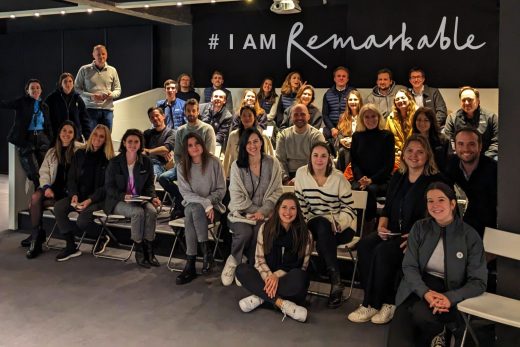As a proud member of MPI’s Green Team, I wasn’t too surprised by recent research that, as of 2009, 62 percent of U.S. companies claim to empower internal teams to create eco-friendly workplaces.
“It’s become part of our jobs to take time to think creatively about sustainability,” says Dedee DeLongpré Johnston, director of sustainability at Wake Forest.
It seems green teams—groups of employees who volunteer to help identify and implement specific sustainable practices in their departments—are flourishing. DeLongpré Johnston says these programs encourage organizations to select green team “captains” to evaluate the current level of sustainable practices in an office or department and make suggestions for ways to improve.
Ideas include simple changes such as purchasing copy paper with recycled content or making available reusable mugs and utensils rather than using disposable ones. Or, changes may have more impact, such as eliminating mini-fridges in individual offices.
“Sustainability is not a one-size-fits-all concept,” says DeLongpré Johnston. Each department or office has different needs. “Organizations tend to be more willing to embrace community-wide goals when they have had a hand in creating the plans to implement them. In using this kind of community-based approach, people often come up with ideas that are bolder than those suggested by the organization—such as having only one trash can per department as a way to encourage waste reduction and recycling.”
Eco-friendly practices adopted by businesses can take root in the larger civic community as well. DeLongpré Johnston cites the water bottle versus pitcher/glasses debate.
“If the department decides to offer refillable water glasses, this becomes an opportunity to involve outside constituents in what that organization is trying to accomplish.”
DeLongpré Johnston offers five tips to help companies and organizations launch a successful green team initiative:
1. Find a champion on your leadership team. Change doesn’t always come from the top down, but it’s important to have buy-in.
2. Prioritize your list of changes by the impact they will make; then assess which are most likely to happen. There isn’t any sense in taking on the biggest problem first if you’re not likely to get any traction. Small steps can lead to bigger changes down the road.
3. Identify leaders for your peer-to-peer education team. Grassroots change is best led by respected members of your organization.
4. Empower members of the team with sound information and guidance. Facts and figures are more compelling than political opinions.
5. Be patient. Change takes time.
(Image courtesy of the NHL.)
By Jessie States February 19, 2011
Source : here





